
Essential Organic Chemistry Study Guide & Solution Manual, Books a la Carte Edition
3rd Edition
ISBN: 9780134255644
Author: Bruice, Paula Yurkanis
Publisher: PEARSON
expand_more
expand_more
format_list_bulleted
Concept explainers
Textbook Question
Chapter 1, Problem 47P
What is the hybridization of the indicated atom in each of the following molecules?
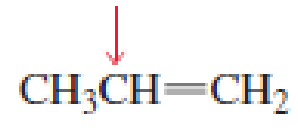
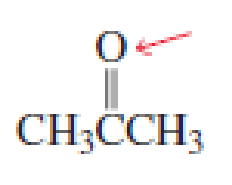
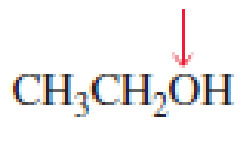
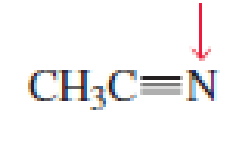
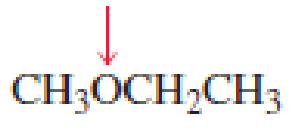
Expert Solution & Answer
Want to see the full answer?
Check out a sample textbook solution
Students have asked these similar questions
Part I.
a) Elucidate
the structure of compound A using the following information.
• mass spectrum: m+ = 102, m/2=57
312=29
• IR spectrum:
1002.5
% TRANSMITTANCE
Ngg
50
40
30
20
90
80
70
60
MICRONS
5
8
9 10
12
13
14 15 16
19
1740 cm
M
10
0
4000
3600
3200
2800
2400
2000
1800
1600
13
• CNMR
'H
-NMR
Peak
8
ppm (H)
Integration
multiplicity
a
1.5 (3H)
triplet
b
1.3
1.5 (3H)
triplet
C
2.3
1 (2H)
quartet
d
4.1
1 (2H)
quartet
& ppm (c)
10
15
28
60
177 (C=0)
b) Elucidate the structure of compound B using the following information
13C/DEPT NMR 150.9 MHz
IIL
1400
WAVENUMBERS (CM-1)
DEPT-90
DEPT-135
85 80 75
70
65
60
55
50
45 40
35
30 25 20
ppm
1200
1000
800
600
400
•
Part II.
a) Elucidate The structure of compound c w/ molecular formula C10 11202 and the following data below:
• IR spectra
% TRANSMITTANCE
1002.5
90
80
70
60
50
40
30
20
10
0
4000
3600
3200
2800
2400
2000
1800
1600
• Information from 'HAMR
MICRONS
8 9 10
11
14 15 16
19
25
1400
WAVENUMBERS (CM-1)
1200
1000
800
600
400
peak
8 ppm
Integration
multiplicity
a
2.1
1.5 (3H)
Singlet
b
3.6
1 (2H)
singlet
с
3.8
1.5 (3H)
Singlet
d
6.8
1(2H)
doublet
7.1
1(2H)
doublet
Information from 13C-nmR
Normal carbon
29ppm
Dept 135
Dept -90
+
NO peak
NO peak
50 ppm
55 ppm
+
NO peak
114 ppm
t
126 ppm
No peak
NO peak
130 ppm
t
+
159 ppm
No peak
NO peak
207 ppm
по реак
NO peak
Could you redraw these and also explain how to solve them for me pleas
Chapter 1 Solutions
Essential Organic Chemistry Study Guide & Solution Manual, Books a la Carte Edition
Ch. 1.1 - Oxygen has three isotopes, 16O, 17O, and 18O. The...Ch. 1.2 - Prob. 2PCh. 1.2 - How many valence electrons do chlorine, bromine,...Ch. 1.2 - Look at the relative positions of each pair of...Ch. 1.3 - a. Find potassium (K) in the periodic table and...Ch. 1.3 - Which bond is more polar?Ch. 1.3 - Which of the following has a. the most polar bond?...Ch. 1.3 - Use the symbols + and to show the direction of...Ch. 1.3 - After examining the potential maps for LiH, HF,...Ch. 1.4 - An atom with a formal charge does not necessarily...
Ch. 1.4 - Prob. 12PCh. 1.4 - a. Draw two Lewis structures for C2H6O. b. Draw...Ch. 1.4 - Draw the lone-pair electrons that are not shown in...Ch. 1.4 - Prob. 16PCh. 1.4 - Which of the atoms in the molecular models in...Ch. 1.4 - Prob. 18PCh. 1.7 - What orbitals are used to form the 10 sigma bonds...Ch. 1.9 - Put a number in each of the blanks: a. ___ s...Ch. 1.11 - Predict the approximate bond angles in a. the...Ch. 1.11 - According to the potential map for the ammonium...Ch. 1.12 - Prob. 25PCh. 1.13 - a. Predict the relative lengths and strengths of...Ch. 1.13 - Prob. 28PCh. 1.14 - Which of the bonds in a carbonoxygen double bond...Ch. 1.14 - Caffeine is a natural insecticide, found in the...Ch. 1.14 - a. What is the hybridization of each of the carbon...Ch. 1.14 - Prob. 33PCh. 1.14 - Describe the orbitals used in bonding and the bond...Ch. 1.15 - Account for the difference in the shape and color...Ch. 1.15 - Which of the following molecules would you expect...Ch. 1 - Draw a Lewis structure for each of the following...Ch. 1 - Prob. 38PCh. 1 - What is the hybridization of all the atoms (other...Ch. 1 - Prob. 40PCh. 1 - Draw the condensed structure of a compound that...Ch. 1 - Prob. 42PCh. 1 - Prob. 43PCh. 1 - Draw a Lewis structure for each of the following...Ch. 1 - Prob. 45PCh. 1 - List the bonds in order from most polar to least...Ch. 1 - What is the hybridization of the indicated atom in...Ch. 1 - Write the Kekul structure for each of the...Ch. 1 - Assign the missing formal charges.Ch. 1 - Predict the approximate bond angles for the...Ch. 1 - Prob. 51PCh. 1 - a. Which of the indicated bonds in each compound...Ch. 1 - In which orbitals are the lone pairs in nicotine?...Ch. 1 - Draw the missing lone-pair electrons and assign...Ch. 1 - Rank the following compounds from highest dipole...Ch. 1 - Prob. 56PCh. 1 - a. Which of the species have bond angles of 109.5?...Ch. 1 - Prob. 58PCh. 1 - Sodium methoxide (CH3ONa) has both ionic and...Ch. 1 - a. Why is a H 8 H bond (0.74 ) shorter than a C 8...Ch. 1 - Which compound has a larger dipole moment, CHCl3...Ch. 1 - Which compound has a longer C 8 Cl bond?Ch. 1 - Prob. 63PCh. 1 - The following compound has two isomers. One isomer...
Knowledge Booster
Learn more about
Need a deep-dive on the concept behind this application? Look no further. Learn more about this topic, chemistry and related others by exploring similar questions and additional content below.Similar questions
- In the image, the light blue sphere represents a mole of hydrogen atoms, the purple or teal spheres represent a mole of a conjugate base. A light blue sphere by itself is H+. Assuming there is 2.00 L of solution, answer the following: The Ka of the left & right solution is? The pH of the left & right solution is? The acid on the left & right is what kind of acid?arrow_forwardNonearrow_forwardNonearrow_forward
- Nonearrow_forwardWhat spectral features allow you to differentiate the product from the starting material? Use four separate paragraphs for each set of comparisons. You should have one paragraph each devoted to MS, HNMR, CNMR and IR. 2) For MS, the differing masses of molecular ions are a popular starting point. Including a unique fragmentation is important, too. 3) For HNMR, CNMR and IR state the peaks that are different and what makes them different (usually the presence or absence of certain groups). See if you can find two differences (in each set of IR, HNMR and CNMR spectra) due to the presence or absence of a functional group. Include peak locations. Alternatively, you can state a shift of a peak due to a change near a given functional group. Including peak locations for shifted peaks, as well as what these peaks are due to. Ideally, your focus should be on not just identifying the differences but explaining them in terms of functional group changes.arrow_forwardQuestion 6 What is the major product of the following Diels-Alder reaction? ? Aldy by day of A. H о B. C. D. E. OB OD Oc OE OAarrow_forward
arrow_back_ios
SEE MORE QUESTIONS
arrow_forward_ios
Recommended textbooks for you
 Chemistry: The Molecular ScienceChemistryISBN:9781285199047Author:John W. Moore, Conrad L. StanitskiPublisher:Cengage Learning
Chemistry: The Molecular ScienceChemistryISBN:9781285199047Author:John W. Moore, Conrad L. StanitskiPublisher:Cengage Learning Chemistry: Principles and PracticeChemistryISBN:9780534420123Author:Daniel L. Reger, Scott R. Goode, David W. Ball, Edward MercerPublisher:Cengage LearningChemistry: Matter and ChangeChemistryISBN:9780078746376Author:Dinah Zike, Laurel Dingrando, Nicholas Hainen, Cheryl WistromPublisher:Glencoe/McGraw-Hill School Pub Co
Chemistry: Principles and PracticeChemistryISBN:9780534420123Author:Daniel L. Reger, Scott R. Goode, David W. Ball, Edward MercerPublisher:Cengage LearningChemistry: Matter and ChangeChemistryISBN:9780078746376Author:Dinah Zike, Laurel Dingrando, Nicholas Hainen, Cheryl WistromPublisher:Glencoe/McGraw-Hill School Pub Co General Chemistry - Standalone book (MindTap Cour...ChemistryISBN:9781305580343Author:Steven D. Gammon, Ebbing, Darrell Ebbing, Steven D., Darrell; Gammon, Darrell Ebbing; Steven D. Gammon, Darrell D.; Gammon, Ebbing; Steven D. Gammon; DarrellPublisher:Cengage Learning
General Chemistry - Standalone book (MindTap Cour...ChemistryISBN:9781305580343Author:Steven D. Gammon, Ebbing, Darrell Ebbing, Steven D., Darrell; Gammon, Darrell Ebbing; Steven D. Gammon, Darrell D.; Gammon, Ebbing; Steven D. Gammon; DarrellPublisher:Cengage Learning Chemistry by OpenStax (2015-05-04)ChemistryISBN:9781938168390Author:Klaus Theopold, Richard H Langley, Paul Flowers, William R. Robinson, Mark BlaserPublisher:OpenStax
Chemistry by OpenStax (2015-05-04)ChemistryISBN:9781938168390Author:Klaus Theopold, Richard H Langley, Paul Flowers, William R. Robinson, Mark BlaserPublisher:OpenStax ChemistryChemistryISBN:9781305957404Author:Steven S. Zumdahl, Susan A. Zumdahl, Donald J. DeCostePublisher:Cengage Learning
ChemistryChemistryISBN:9781305957404Author:Steven S. Zumdahl, Susan A. Zumdahl, Donald J. DeCostePublisher:Cengage Learning

Chemistry: The Molecular Science
Chemistry
ISBN:9781285199047
Author:John W. Moore, Conrad L. Stanitski
Publisher:Cengage Learning

Chemistry: Principles and Practice
Chemistry
ISBN:9780534420123
Author:Daniel L. Reger, Scott R. Goode, David W. Ball, Edward Mercer
Publisher:Cengage Learning

Chemistry: Matter and Change
Chemistry
ISBN:9780078746376
Author:Dinah Zike, Laurel Dingrando, Nicholas Hainen, Cheryl Wistrom
Publisher:Glencoe/McGraw-Hill School Pub Co

General Chemistry - Standalone book (MindTap Cour...
Chemistry
ISBN:9781305580343
Author:Steven D. Gammon, Ebbing, Darrell Ebbing, Steven D., Darrell; Gammon, Darrell Ebbing; Steven D. Gammon, Darrell D.; Gammon, Ebbing; Steven D. Gammon; Darrell
Publisher:Cengage Learning

Chemistry by OpenStax (2015-05-04)
Chemistry
ISBN:9781938168390
Author:Klaus Theopold, Richard H Langley, Paul Flowers, William R. Robinson, Mark Blaser
Publisher:OpenStax

Chemistry
Chemistry
ISBN:9781305957404
Author:Steven S. Zumdahl, Susan A. Zumdahl, Donald J. DeCoste
Publisher:Cengage Learning
INTRODUCTION TO MOLECULAR QUANTUM MECHANICS -Valence bond theory - 1; Author: AGK Chemistry;https://www.youtube.com/watch?v=U8kPBPqDIwM;License: Standard YouTube License, CC-BY